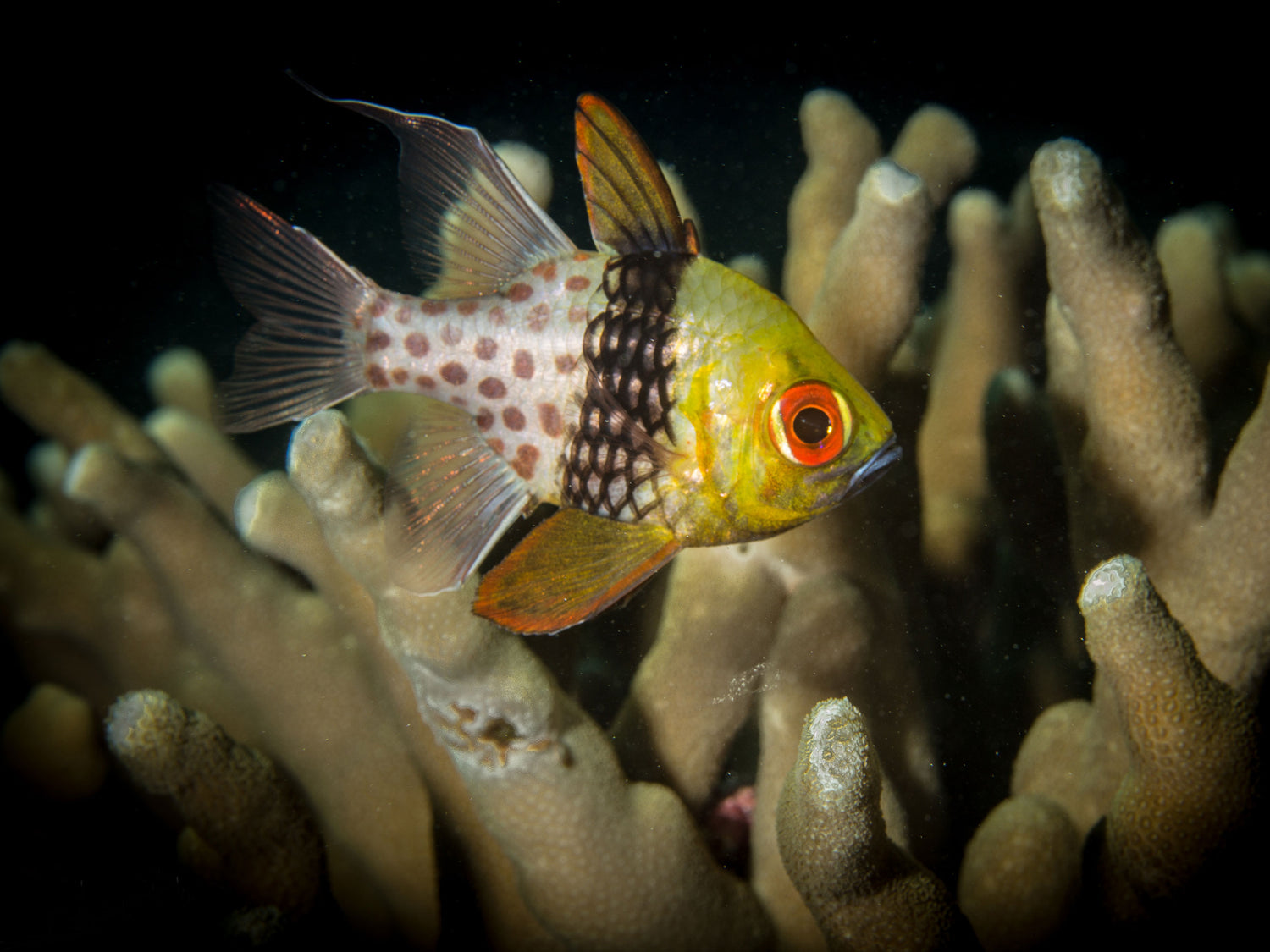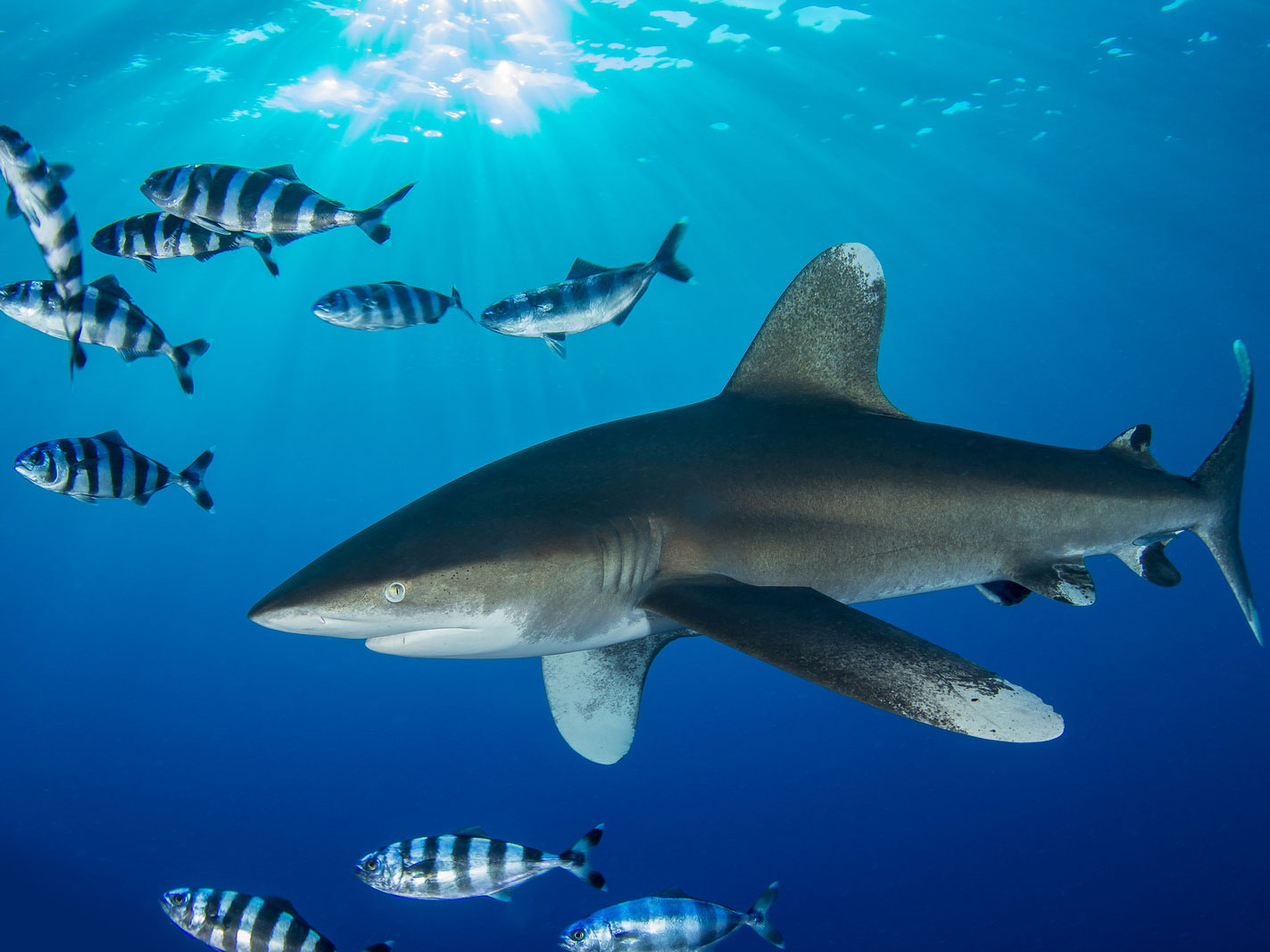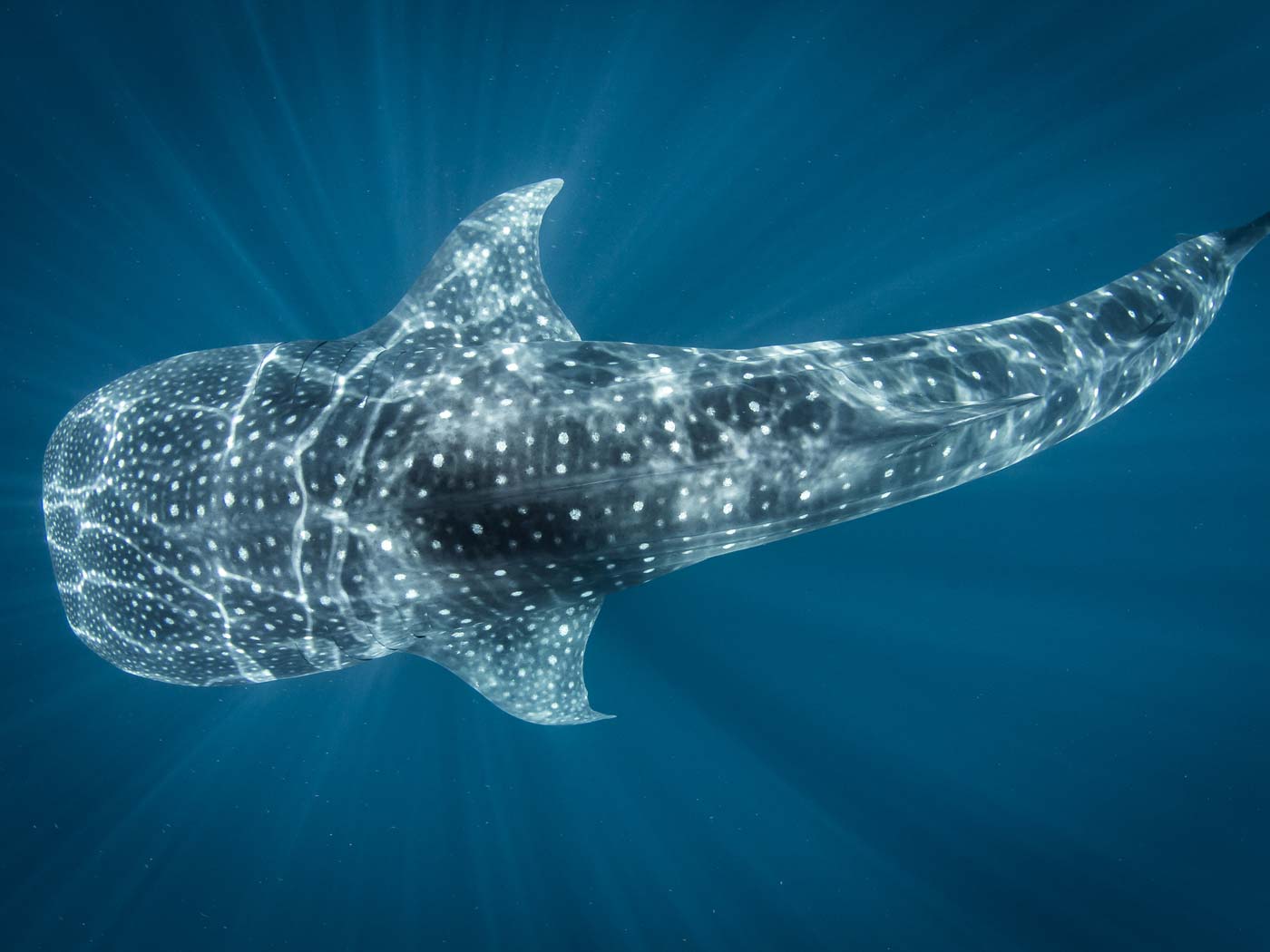A familiar dive site can take on a whole other character at night. Besides the fact that the sun won't be out, usually a variety of different marine life are waking up and coming out to feed and do their business. Corals and sponges can also exhibit different behavior after the sun goes down.
Ask the local dive guides what to look for on a night dive. Some favorite subjects are always octopuses and reef squid. Some areas are famous for night dives with bigger subjects for example loggerhead turtles in the Bahamas or manta rays in Hawaii.
Where
All waters.
DSLR + Mirrorless
ISO: 200-400 (typically low)Mode: M Manual
Aperture: f/8-f/22 determined by strobe power and subject distance
Shutter Speed: 1/125-1/160
Lens: 35mm to 100mm macro usually, although wide angle lenses can be used artistically at night
Point + Shoot
ISO: 100 to 200
Mode: M Manual or Av Aperture Priority; Microscope or macro mode
Aperture: The smallest available (highest number) if you have enough light and manual control of the aperture
Shutter Speed: 1/125-1/160
Lens: Macro mode of the lens; Diopters may be added externally
Strobes
In most cases, strobes (or constant on lights) will provide 100% of your lighting. TTL is the easiest as you can shoot dark and light subjects without changing strobe settings. For macro and super macro the strobe(s) will fire at very low power.
Compared to constant on lighting, strobes have a better ability to freeze the subject for better sharpness and less motion blur.
Technique
A constant on aiming or focus light is essential to allow your camera to focus and shoot quickly at night. Typically you can use the same settings and techniques as you would to shoot macro during the day. If you are more than 2 f/stops darker than the ambient light, then you are on your way to a blacked out background which can make a colorful subject pop.
Pro Tip: If you move slowly at night and use big lights, the plankton and "bugs" underwater will find you. In some cases, fish will use your lights to hunt by hanging just outside the beam and then rushing in when they see something tasty. A better way is to use red light; it is subtle and the bigs won't follow you around and fill up your frame.













